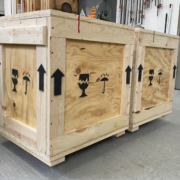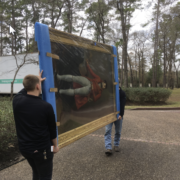Packing Your Art
Packing your art can be more than just crates!
By Gregory Frederick
The time has come to move your artwork, whether it is down the street or across the country, the best possible precautions should be taken to assure a safe travel and that means properly packing your artwork for transit. There are several ways to approach this depending on the artwork. Some things to know are how it is being shipped, and where it will be shipped, maybe it is locally, or across the country, or even internationally. Each might require more advanced packing than what you may have initially considered.
First let us think about what we need to do before packing an artwork, and that is commonly referred to as wrapping the works. This step in the process is to cover the work with a protective layer between the artwork and the final packing materials. Employing materials like Glassine, a paper that is water, air, and oil resistant, or Dartek, a thin transparent film with similar features to Glassine. The important aspect of this wrapping is the ability to seal a work and create a cover for the work that will keep out dust and debris. Depending on what comes next in packing there may also be the inclusion of bubble wrap to create a soft cushion around the piece and help protect the edges and corners.
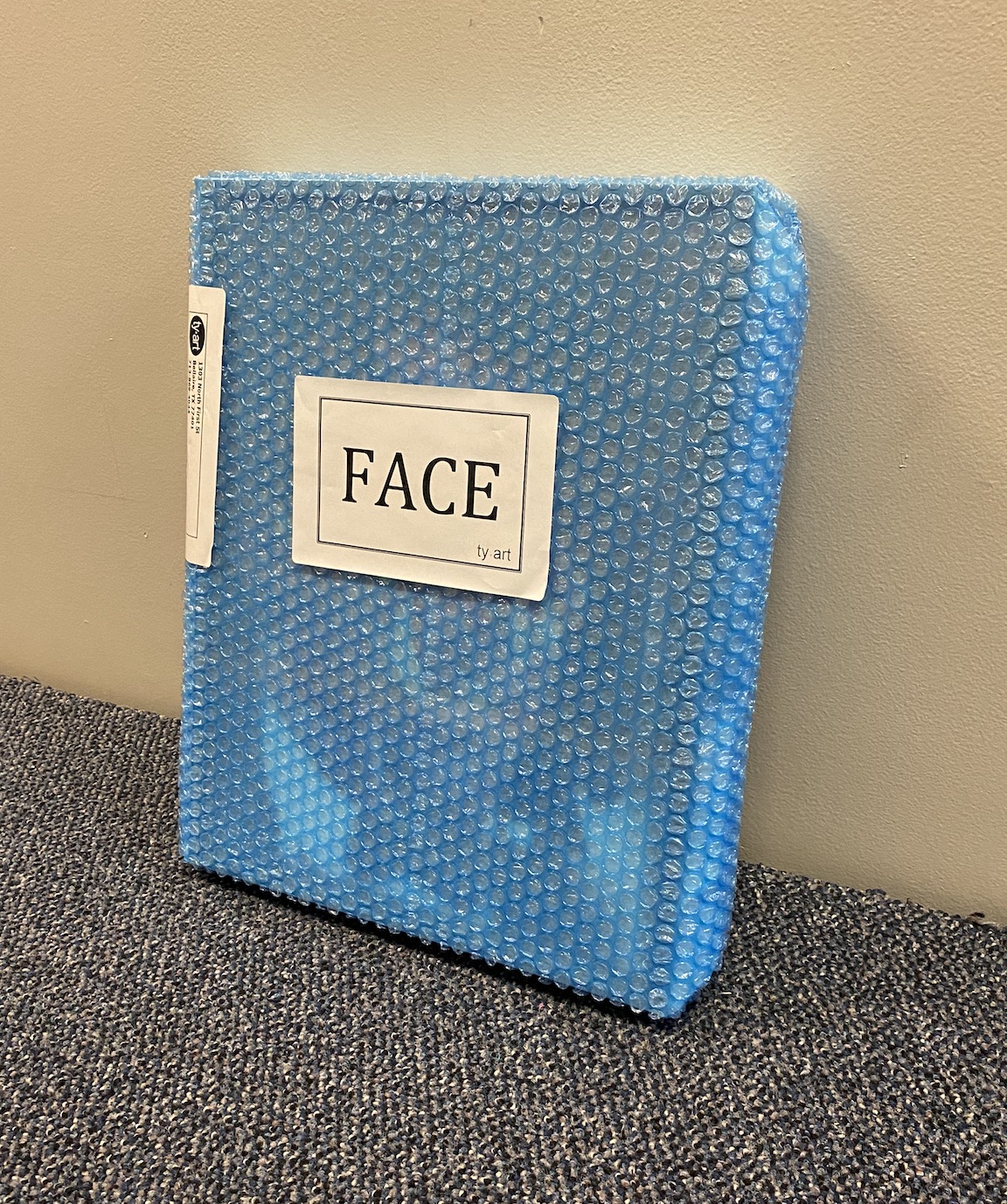
An early question to ask about packing a work is to determine how it is being transported. Will it go in a van, shipped in a truck, shipped on a boat, or flown on a plane? The next question to ask is will it need to travel internationally or simply across the city? Often for shipping, the shipper will need to know the size and weight of the item being transported and the packing will be a determining factor of this. The obvious conclusion is that the smaller and lighter a work is packed the cheaper it will be to ship. The issue there is that the smaller and lighter the packing the greater the risk to the work in transit.
However, there are many times when a simple light packing is appropriate. The most common term for such packing methods is “Soft packing” and some companies mass produce an easily used prefabricated box for packing called Masterpacks, these are a one size fits most scenario. The “soft packing” of a work can be as simple as being wrapped in bubble wrap, or having constructed cardboard boxes with a foam barrier, these boxes are called slipcases and some slipcases are even reinforced with masonite, a thin pressed wood, to increase the protective quality of the packing. This form of packing is considered the most common of packing methods for most works to be shipped due to its low cost and ease in construction compared to other options. This is also a common method in packing smaller works and for use in shipping with parcel services. It should be noted that some parcel services have a size limitation and larger pieces will need to use other methods of shipping.
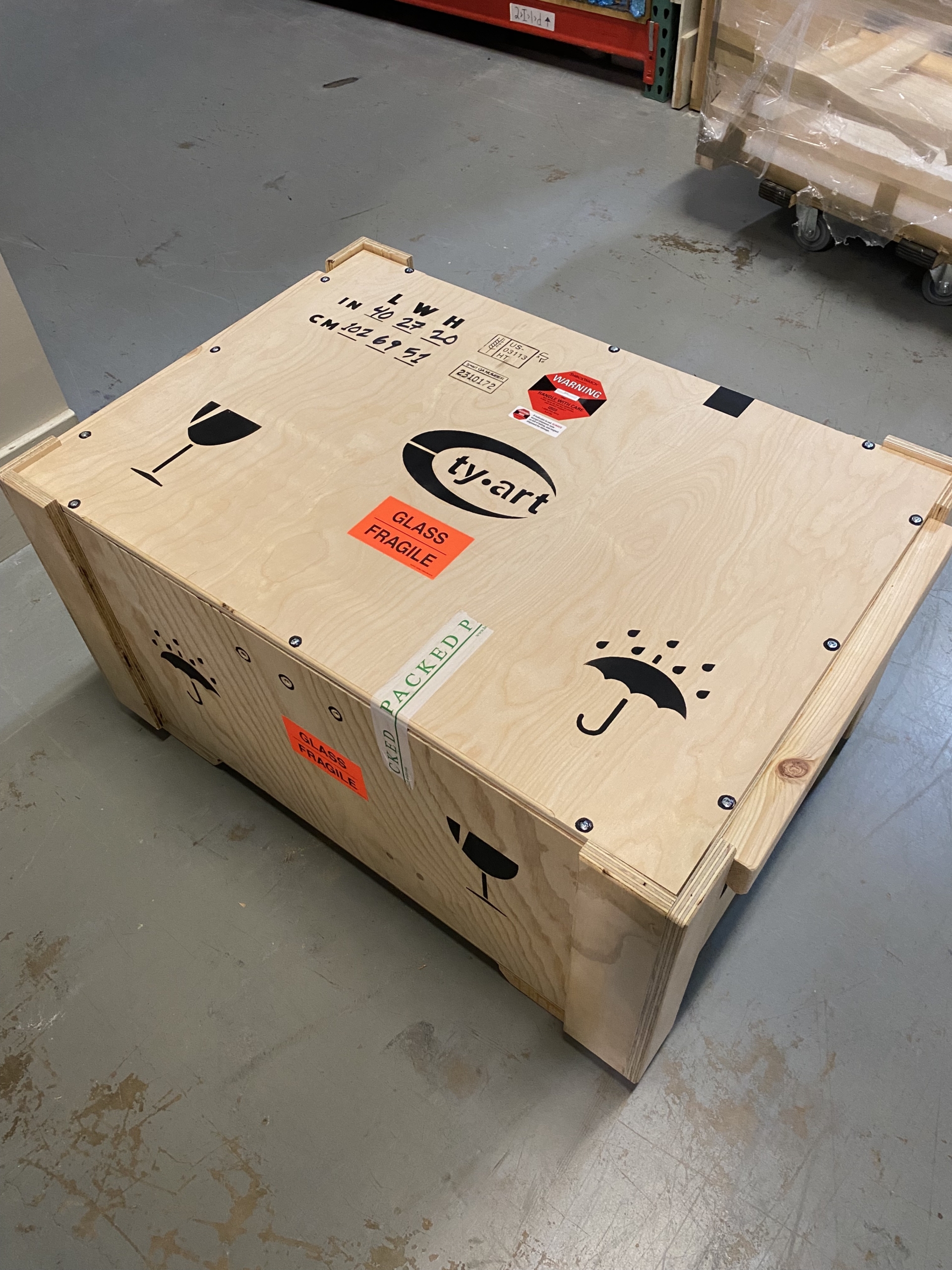
Crating is the most common phrase used to describe the need to pack something for shipping, but what does this actually look like? A number of materials are used in the construction of crates. Let us start with the wood; plywood and 2×4 planks are mostly used, the wood sometimes specialized and needs to be treated for international shipping. Cut to fit, crates are typically unique to the works being packed into them, though it is not uncommon to retrofit a crate if possible. Internally, the crates also need to be insulated and foamed out to fit the item to be packed.
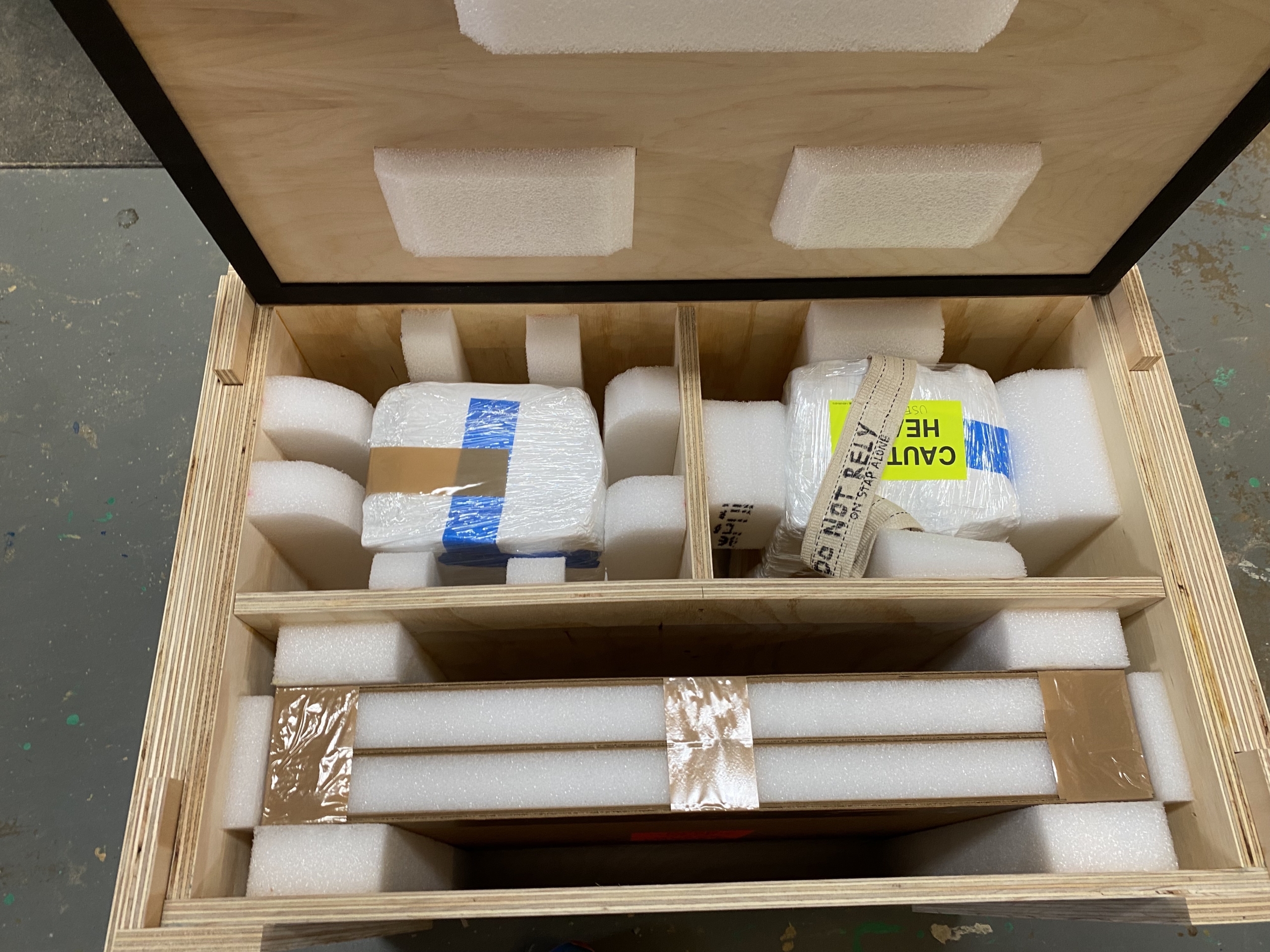
In some cases, crates are an excellent method for shipping several items at once in one container. There are also different types of crates depending on if it is to be reused several times for example in a traveling exhibit. The crate may need to be a higher level of protection, such as with a museum crate that includes additional layers of internal and external sealing against humidity and off-gassing that could potentially harm the artworks. This involves creating gasket seals at the opening of the crate and putting a moisture barrier, usually in the form of an oil based paint, on the whole crate.
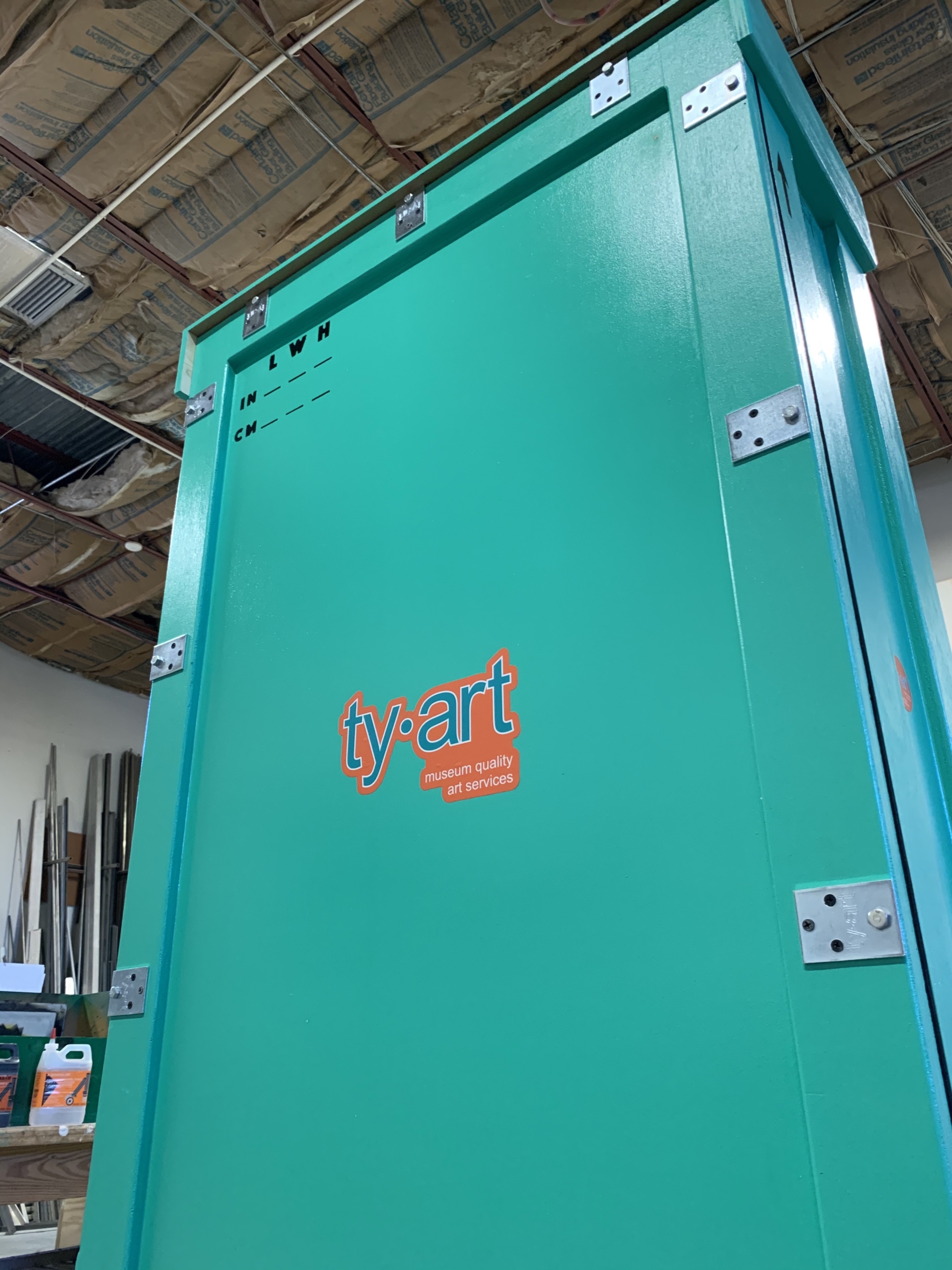
As you can imagine these crates can be costly and in some cases more than your working budget. So then let us examine some of the other options available? What if you need to ship several pieces at once to the same destination? Some smaller, thin works could possibly be packed together in one box. Another option is the use of what is called a “bin box” or “gondola box”, this is a large prefabricated box where many items of varying sizes can be packed together. While not suitable for use with parcel companies, LTL shippers and art shuttle companies can accommodate them with no issues and they are great for local transportation as they require little to no wrapping ahead of time.
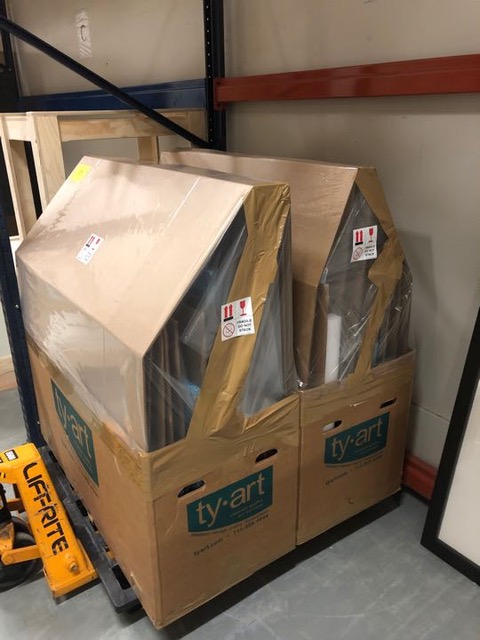
Some works need specialized packing due to the nature of the work. Be it from an ornate mirror frame that cannot rest on its sides or artworks that cannot have something touching the front face or sides of the work, what do you do then? For works that can have the side touch but need the face of the work protected, a method called “collaring” is used. This is the use of an extended piece of cardboard that goes around the sides of the work and extends past the face of the image. Then when the glassine or Dartek is wrapped onto the work, it protects the piece while not touching the image face. In the instances of ornate frames or large pieces that cannot have the sides touch, the use of a slate-crate, a skeleton crate or travel-frame is used to pack the work. The use of the travel-frame also eases in the handling of the work and protects during shipping.
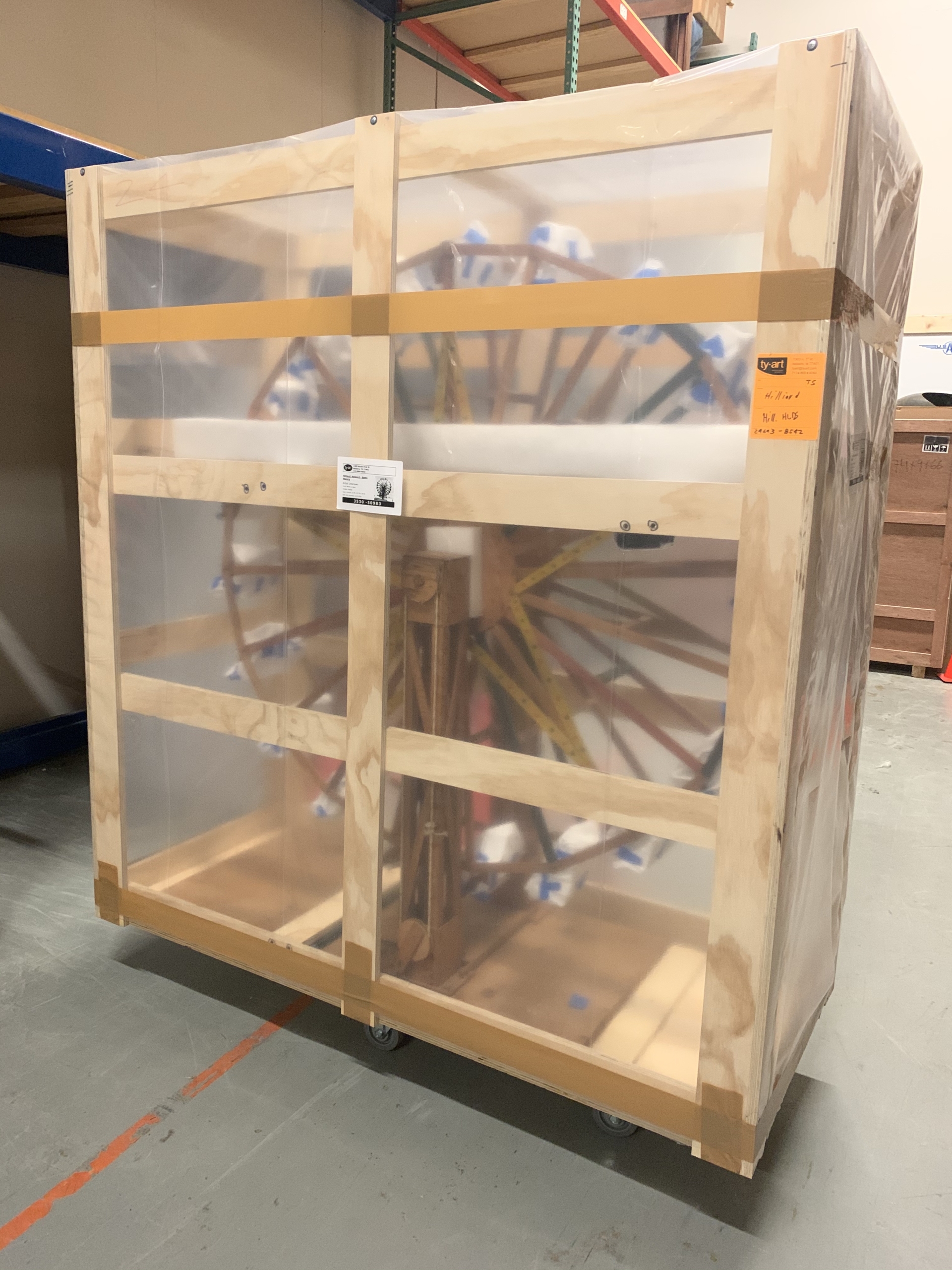
An important little detail is also the inclusion of the labels on any packed work. A simple but important step in knowing which side is the “face” or front of an artwork and also marking the orientation of the piece, knowing which side is up is very important when moving and unpacking! This marking can be crucial if the piece will switch hands in transit.
While crates are an option, they are not the only way to pack works. Crates can be a great choice and are sturdy wood boxes that are common for shipping and storing art, but they can also be costly and unnecessary for a short trip. There are several other options to offer for packing your artworks.


